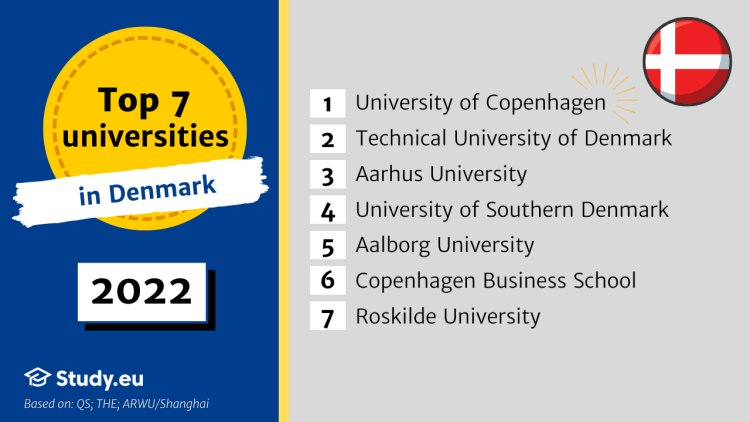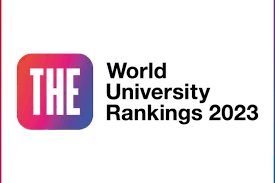Rankings Overview of Universities
Meta Description: Discover everything about university rankings, from top ranking organizations like QS and Times Higher Education to their methodologies and impact. Explore how rankings influence student decisions, research funding, and institutional strategies in global higher education.

Complete Information
University rankings have become an integral part of the higher education landscape, influencing students, faculty, policymakers, and even universities themselves. This extensive guide provides a comprehensive overview of university rankings, exploring their importance, methodologies, impact, and future trends.
Introduction
University rankings play a significant role in the global education sector. They serve as benchmarks for academic quality, research output, and institutional reputation. Prospective students use these rankings to make informed decisions about where to apply and enroll, while universities use them to attract students, faculty, and funding. The history of university rankings dates back several decades, evolving from informal reputational surveys to sophisticated metrics-driven evaluations conducted by major ranking organizations.

Major Ranking Organizations
Several organizations dominate the field of university rankings. Among the most influential are the QS World University Rankings, Times Higher Education (THE) World University Rankings, Academic Ranking of World Universities (ARWU), and U.S. News & World Report Best Global Universities. Each of these organizations uses distinct methodologies and criteria to evaluate and rank universities worldwide.
The QS World University Rankings is known for its comprehensive approach, assessing universities based on six key metrics: academic reputation, employer reputation, faculty/student ratio, citations per faculty, international faculty ratio, and international student ratio. This combination of academic and employer perspectives, along with quantitative research measures, provides a balanced view of institutional performance.
The Times Higher Education World University Rankings employs a slightly different methodology, focusing on 13 performance indicators grouped into five areas: teaching, research, citations, international outlook, and industry income. This approach emphasizes the overall learning environment and the impact of research.
The Academic Ranking of World Universities (ARWU), also known as the Shanghai Rankings, places a heavy emphasis on research output and quality. Factors considered include the number of alumni and staff winning Nobel Prizes and Fields Medals, the number of highly cited researchers, and articles published in top journals.
The U.S. News & World Report Best Global Universities rankings rely on a combination of bibliometric data and academic reputation surveys. These rankings place significant emphasis on research performance and international collaboration.
Other notable ranking systems include the CWTS Leiden Ranking, which focuses on bibliometric indicators, and the Center for World University Rankings (CWUR), which considers factors such as education quality, alumni employment, and research performance.
Methodologies and Criteria
Understanding the methodologies used by different ranking organizations is crucial for interpreting their results. Common criteria used in university rankings include academic reputation, employer reputation, faculty/student ratio, citations per faculty, international faculty ratio, and international student ratio.
Academic reputation is typically assessed through surveys of academics and employers, reflecting the perceived quality of education and research. Employer reputation evaluates the employability of graduates, based on feedback from companies and organizations that hire them.
The faculty/student ratio measures the teaching capacity of the institution, with a lower ratio indicating more personalized attention for students. Citations per faculty reflect research impact and productivity, as measured by the number of times a university's research is cited in academic publications.
The international faculty and student ratios indicate the global diversity of the academic staff and student body, respectively. These metrics highlight a university's appeal to scholars and students from around the world.
Each ranking organization assigns different weights to these criteria, leading to variations in their results. For instance, QS places significant emphasis on reputation surveys, while ARWU focuses more on research output and quality. These differences can lead to varying outcomes across rankings, even for the same institutions.
Regional and National Rankings
In addition to global rankings, regional and national rankings provide insights into how universities perform within specific geographic areas. Regional rankings focus on universities within a particular continent or region, such as Asia, Europe, the Americas, Africa, and Oceania. These rankings highlight institutions that may not appear at the top of global rankings but excel within their region.
Country-specific rankings, such as those for the USA, UK, Australia, and China, offer a more focused perspective. These rankings consider national education systems and policies, providing a clearer picture of university performance within a country. For example, the National Institutional Ranking Framework (NIRF) in India evaluates universities based on criteria relevant to the Indian education context.
Comparing regional and global rankings can reveal interesting trends. Some universities may rank higher regionally than globally due to different criteria and weighting. Regional rankings often emphasize aspects such as teaching quality and community engagement, which may not be as heavily weighted in global rankings

.
Impact of Rankings on Universities
University rankings have a profound impact on various aspects of higher education. For students, rankings influence decisions about where to apply and enroll. A high ranking can attract students from around the world, enhancing the diversity and reputation of the institution.
For universities, rankings can affect research funding and collaboration opportunities. Institutions that perform well in rankings often receive more grants and are more likely to collaborate with other top universities and research organizations. Rankings also influence university policies and strategies. Many universities invest in improving their ranking positions by enhancing their research output, improving faculty/student ratios, and increasing internationalization efforts.
Alumni and employment opportunities are also impacted by university rankings. Graduates from highly ranked universities often have better job prospects, as employers frequently use rankings as a measure of the quality of education and the potential of graduates. High-ranking universities tend to have strong alumni networks, which can provide valuable support and opportunities for current students and recent graduates.
Case Studies of Top Universities
Analyzing the performance of top universities in various rankings provides insights into the factors contributing to their success. Harvard University, for example, consistently ranks among the top universities globally due to its strong academic reputation, extensive research output, and influential alumni network.
Stanford University is renowned for its innovation and entrepreneurial spirit. Its strong emphasis on research and technology has earned it top spots in many rankings. The Massachusetts Institute of Technology (MIT) excels in science and technology, with a high number of Nobel laureates and cutting-edge research projects.
The University of Cambridge and the University of Oxford, two of the oldest and most prestigious universities, consistently perform well in global and national rankings. Their rich history, academic excellence, and strong research output contribute to their high rankings.
Analyzing the rankings of these top universities over the years reveals interesting trends. For instance, shifts in ranking positions can reflect changes in research funding, faculty quality, or student satisfaction.
Criticism and Controversies
Despite their widespread use, university rankings are not without criticism. Common criticisms include the overemphasis on research output, bias towards English-speaking institutions, and the impact of rankings on university behavior. Critics argue that rankings can incentivize universities to prioritize certain metrics over others, potentially neglecting important aspects of education and student experience.
Issues of bias and transparency in ranking methodologies are also prevalent. Some ranking organizations have faced criticism for a lack of transparency in how they collect and analyze data. This can lead to questions about the accuracy and fairness of the rankings.
Controversial rankings and revisions have also occurred. In some cases, universities have been found to manipulate data to improve their ranking positions. Notable examples include universities inflating their research output or providing inaccurate information about faculty qualifications.
Future of University Rankings
The future of university rankings is likely to be shaped by emerging trends in higher education. Online education, interdisciplinary research, and the increasing importance of soft skills are transforming the landscape of higher education. These trends may lead to changes in ranking methodologies to better reflect the evolving nature of education and research.
As higher education evolves, ranking organizations may also need to adapt their methodologies. Potential changes could include greater emphasis on teaching quality, student satisfaction, and community engagement. The role of technology and innovation in higher education is also likely to impact future rankings.
Predictions for future university rankings suggest a continued focus on research output and internationalization. However, there may also be a growing emphasis on factors such as social impact, employability, and lifelong learning opportunities

.
Conclusion
University rankings are a valuable tool for various stakeholders in the higher education sector. Despite criticisms and controversies, they provide important insights into the quality and performance of institutions. Understanding the methodologies and criteria used in rankings is crucial for interpreting their results.
Rankings influence student decisions, research funding, university policies, and alumni opportunities. Top universities consistently perform well in rankings due to their strong academic reputation, research output, and global impact.
As higher education continues to evolve, ranking organizations may need to adapt their methodologies to reflect new trends and priorities. The future of university rankings will likely involve a greater emphasis on teaching quality, student satisfaction, and social impact, alongside traditional measures of research output and internationalization.
By navigating university rankings effectively, students, parents, and universities can make informed decisions and strive for continuous improvement in higher education
What's Your Reaction?





















